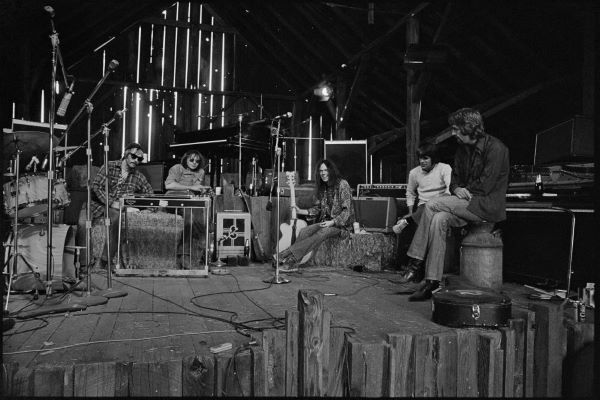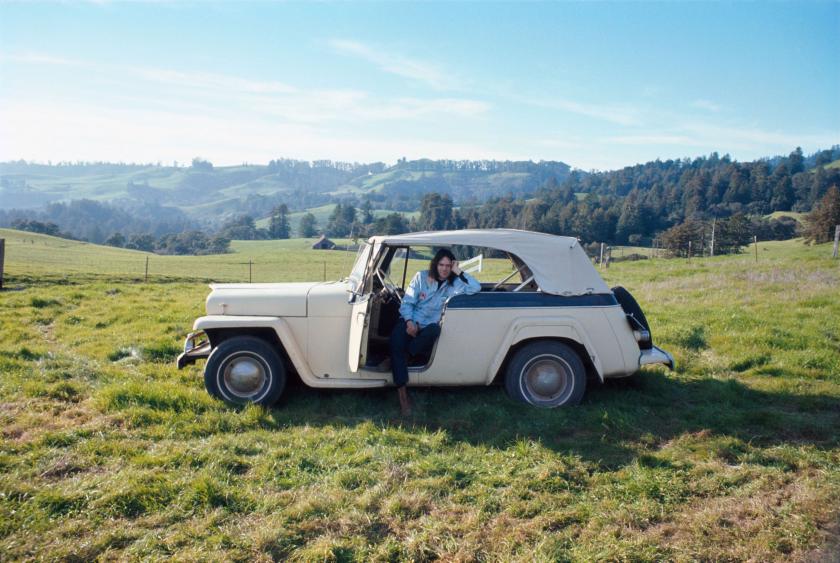“You’re filmin’ a movie or something – can you explain this?” the radio DJ turns to Neil Young, a laugh underpinning his question and setting the scene: light, jovial.
“We’re just makin’ a film about…” Young pauses for a second. “I dunno, just the things we wanna film… I’m making it like I make an album, sort of… It’s like… I’m cutting it, instead of… so it’s personal, like an album.”
“So some day someone’ll be able to go to a theatre and see it maybe?” the DJ asks.
“Yeah, I hope so, maybe pretty soon,” comes the reply.
This reasonably edited conversation occurs toward the closing act of Neil Young: Harvest Time, a documentary released to coincide with the 50th anniversary of arguably the singer-songwriter’s most celebrated album. Culled from never-seen-before footage shot between January and September 1971, it’s taken more than half a century to see the light of day. Amplified by time and context, Young’s guess of a release “pretty soon” is hilariously off, full of dramatic, laugh-out-loud irony that puts an arm around the viewer, while taking a hit and saying, “Yeah, I KNOW, right?”
And this is very much the tone throughout – warm, celebratory, charming and fun. Make no mistake, this is a fly-on-the-wall fan piece aimed at those with prior knowledge and a hunger for more. Those wanting a Classic Albums-esque breakdown with exposition-heavy narrative are going to be disappointed. Neil Young: Harvest Time is, like the man’s music, all about feel, tones, and texture. It’s linear, but happily jack-knifes with abandon, and to great – sometimes startling – effect. We begin in the barn at Young’s Broken Arrow ranch (pictured above) in California, where a twenty-something Young brought the young musicians (later named The Stray Gators) he’d found in Nashville to record the heavier, electric moments for Harvest. The footage of them jamming and working through “Words (Between the Lines of Age)” and “Alabama” on the fly feels wonderfully voyeuristic – filmed from the side of a piano, or through a drumkit. The result is an incredible sense of intimacy, like a child peering through the bannisters at a parents’ party.
We begin in the barn at Young’s Broken Arrow ranch (pictured above) in California, where a twenty-something Young brought the young musicians (later named The Stray Gators) he’d found in Nashville to record the heavier, electric moments for Harvest. The footage of them jamming and working through “Words (Between the Lines of Age)” and “Alabama” on the fly feels wonderfully voyeuristic – filmed from the side of a piano, or through a drumkit. The result is an incredible sense of intimacy, like a child peering through the bannisters at a parents’ party.
All of a sudden, we’re in a studio. Neil with David Crosby to his right, and Stephen Stills to his left. It’s a breathtaking jump cut, and a trick that’s repeated later, in a different studio and with Graham Nash replacing Croz. What shines through both scenes is the friendship, fun, and good humour – and the spine-tingling thrill a three-part harmony can bring to pretty much any party.
The film is strewn with moments like this, moments that make you catch your breath or break out in a broad smile. The blink-and-you’ll-miss-it introduction of Broken Arrow caretaker Louis Avila, the subject of Young’s beautiful bridge across the age divide “Old Man”; the singer relaxing at his ranch, lazily pre-empting, and addressing, concerns about his song “Alabama” before Lynyrd Skynyrd had even heard it; in London, beer in hand, complaining that the London Symphony Orchestra are playing too slow, working to the beat of the conductor’s baton rather than his own cue.
And, of course, there’s enough musical muscle here to keep anyone with ears satisfied. Run-throughs of “Heart of Gold”, “A Man Needs a Maid” (with the aforementioned LSO), “Old Man”, “Heart of Gold”, show songs with charmingly rough character in various stages of refinement.
But mostly, and perhaps more important, Neil Young: Harvest Time is a captivating document of a young man with wealth beyond his imagination whose life has been a whirlwind, giving himself the time and the space to figure out who he is and what he wants to do. Throughout the film, Young is pictured breaking out into a goofy, broad grin: “I feel more free now than I’ve ever felt before,” he says at one point. It’s the sound of a man enjoying life and finding his place – a needle finding its groove.













Add comment